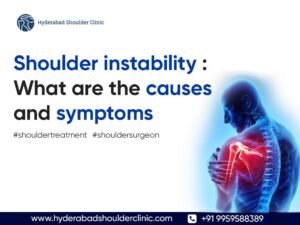Blood is needed for sustaining life and for overall health. However, if the blood supply to a tissue or an organ is interrupted, that particular tissue or organ dies. Avascular Necrosis is when the blood supply to the bone is interrupted and causes the death of bone tissue.
Avascular Necrosis (AVN) can occur anywhere in any body joint, including the hip, ankle, knee, and shoulder.
What is AVN of the Shoulder
The shoulder is one of the body’s most flexible and complex joint structures. An upper bone known as the humerus fits perfectly into the scapula (shoulder blade), like a ball and socket. The humeral head is covered with a smooth, white tissue called articular cartilage to facilitate smooth movement of the bones.
Blood vessels from various locations supply blood to the humerus and branch out inside the humeral head towards the periphery. The blood supply to the humeral head is lost for a patient with AVN, leading to bone necrosis or bone death. Simply understand, the humeral head suffers a stroke due to the loss of blood supply.
One should avoid any injury to the shoulder affected as the primary step. To effectively treat the underlying cause of avascular Necrosis of the shoulder, the progression of the disease must be stopped. After trying non-surgical treatments, joint-preservation operations are performed to improve blood supply to the affected bone if the condition is still progressing. But shoulder replacement surgery may be required if the progression has gone to the stage where the bone has collapsed.
What causes AVN of the shoulder, and what are the risk factors?

- Trauma
- Uncontrolled alcohol consumption
- Long-term usage of drugs such as corticosteroids
- Kidney or bone marrow transplant
- Certain conditions like Sickle Cell Anemia
- Chemotherapy
Symptoms of AVN of the shoulder
The common symptoms of AVN of the shoulder are:
- Shoulder Pain
- Crackling sound on movement
- Reduced mobility
- Stiffness of the joint
Initially, the patient does not experience continuous symptoms, but as the condition progresses, the symptoms become more consistent. AVN, if advanced, may even interfere with sleep.
AVN can be diagnosed with imaging techniques such as X-rays, MRIs, and bone scans.
Treatment of AVN of the shoulder
Treatment of AVN depends on the stage of the disease. There are 5 stages of AVN, and the higher the stage, the more there is a requirement for surgery. If the patient is in Stage I, it can be treated easily with non-surgical treatment. But if the AVN progresses to stage V, which means that the humeral head collapses and the socket is also damaged, then a shoulder replacement surgery is recommended.
The treatment options involve the following:
Non-surgical Treatment
The non-surgical treatment options for AVN are:
Bisphosphonates: The disease progression is reduced so the bone does not collapse.
Lipid-lowering agents: maintaining a healthy lipid profile helps prevent vessel blockages, which are the leading cause of avascular Necrosis.
Vasodilators: They can dilate or prevent the constriction of blood vessels for the free flow of blood.
Non-steroidal anti-inflammatory drugs (NSAIDs): NSAIDs are used to relieve pain caused by avascular Necrosis.
Exercises & Rest: Consult an excellent physical therapist to know the best practices to reduce the pain and increase the range of motion of the affected joint. Rest is also highly recommended.
The main objective of non-surgical treatment of AVN is to restore the blood supply, promote the growth of newer bones, increase mobility and reduce pain.
Surgical Treatment of AVN of the Shoulder

As mentioned above, advanced stages of avascular Necrosis need surgical intervention. The most prominently used surgical treatments of AVN are:
Core Decompression: small holes are drilled from the healthy bone to the area of Necrosis in the humeral head. Post-surgery, new channels are created that allow new blood vessels to grow into the necrotic area.
Bone Grafting: The necrotic or dead bone is replaced with a donor’s bone, usually taken from the patient’s hip. Grafting works for mild to moderate cases of AVN.
Shoulder replacement for the treatment of AVN
Shoulder replacement works best for advanced stages of AVN. As the name suggests, in a shoulder replacement surgery, the damaged bone areas are replaced with metal and plastic parts, known as implants. There are various implants available in different shapes and a range of sizes. A patient can undergo partial and total shoulder replacement. Partial shoulder replacement is applicable when AVN affects only one side of the joint. Complete joint replacement surgery is preferred when the humeral head and socket are severely damaged.
When the affected bone has collapsed, and none of the above treatments isn’t helping partial joint replacement surgery can replace the damaged parts of the joint with plastic or metal parts. The humeral head is replaced with a prosthetic implant for an AVN patient. There has been quite an advancement in implant design.
For more information please visit our website Orthopedic Hospital in Hyderabad | Orthopedic Surgery | Dr Chandrashekar (hyderabadshoulderclinic.com) or contact us at
+91 9959588389, shoulderandsportsclinic@gmail.com.





